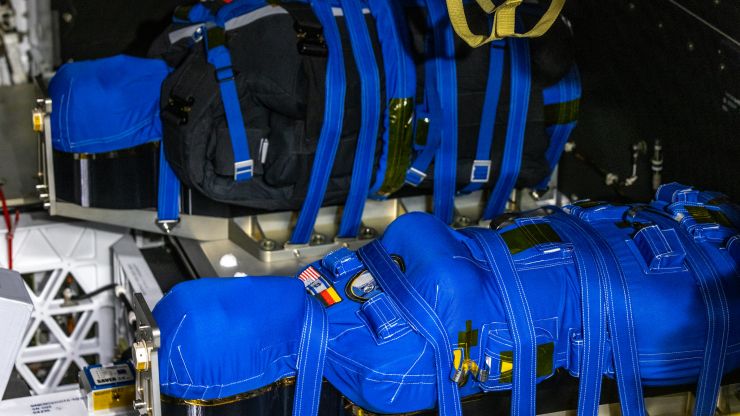Artemis Launches With Two Duke Experiments
Proof-of-Concept Return to Moon is Being Measured by Duke Data
NASA's return to the Moon began at 1:47 a.m. Wednesday with the launch of Artemis I, a giant rocket carrying two experiments from Duke researchers.
While the uncrewed Orion capsule orbits the moon for the next three weeks, two instrumented dummies, Zohar and Helga, will collect data on radiation and other factors that may affect crew health. The human stand-ins were created by researchers at the Carl E. Ravin Advanced Imaging Laboratories at the Duke School of Medicine with researchers at NASA, the German Aerospace Center, the Israeli Space Agency and an instrumentation company called CIRS.
Zohar wears a prototype radiation-proof vest, while Helga takes the full dose of space radiation.

Also aboard is a "Fuel to Mars" study designed by Dr. Tim Hammond of Duke Medicine and Dr. Holly Birdsall of the Durham VA and Baylor Medicine that will look at the genes and gene pathways enacted by a population of fuel-producing algae aboard the capsule as it experiences space radiation and microgravity.
The Artemis launch had been delayed by technical difficulties and two hurricanes before finally reaching space Wednesday morning. The capsule, with algae and dummies, is expected to return to Earth for splash down in 25 days.